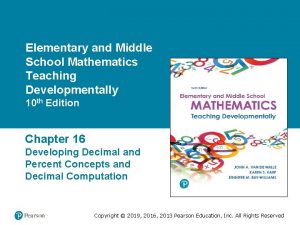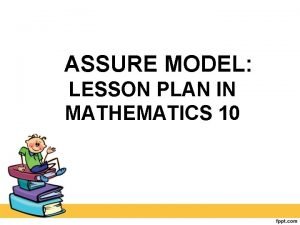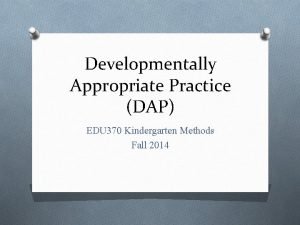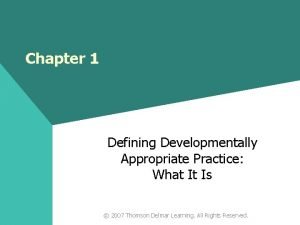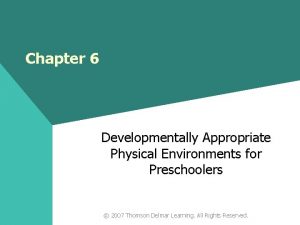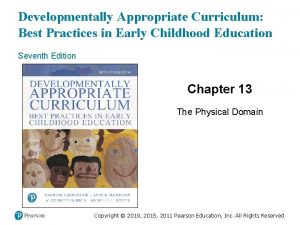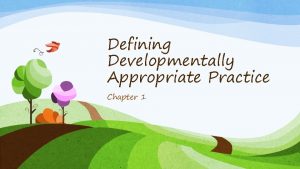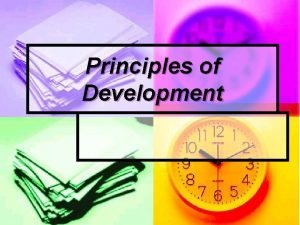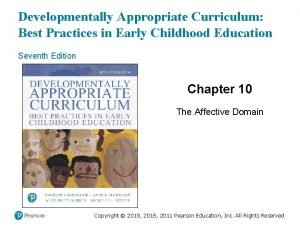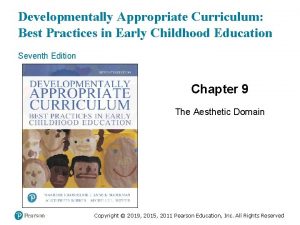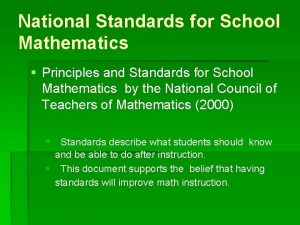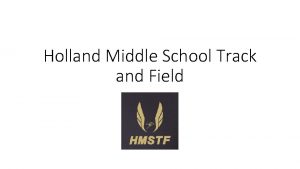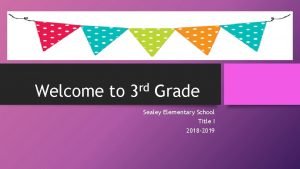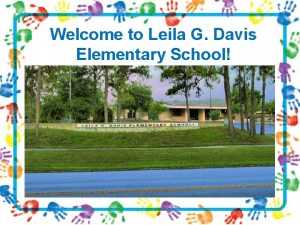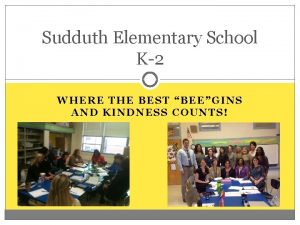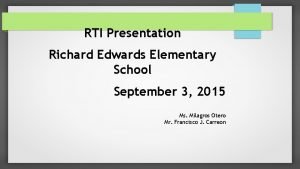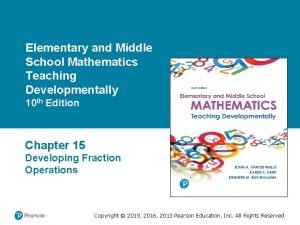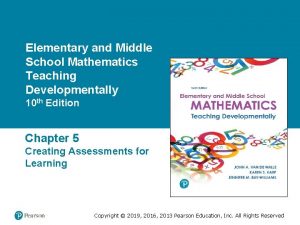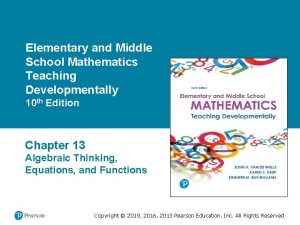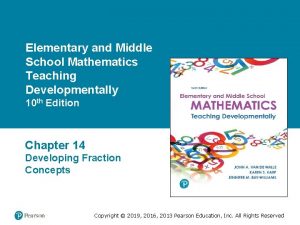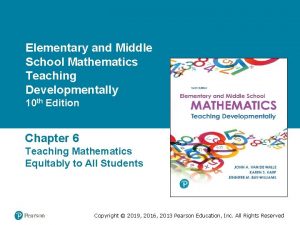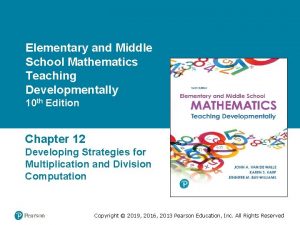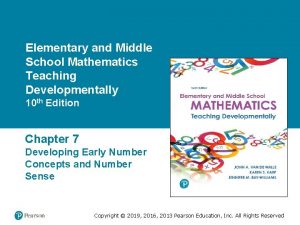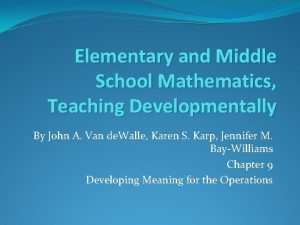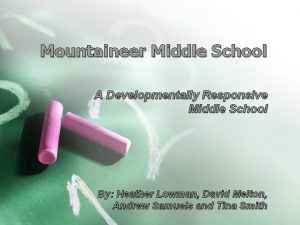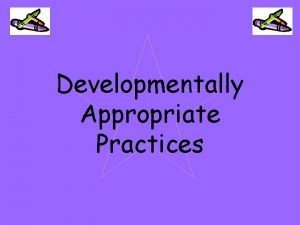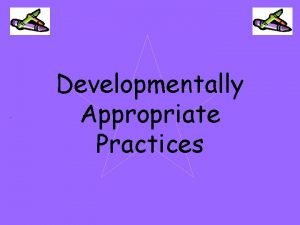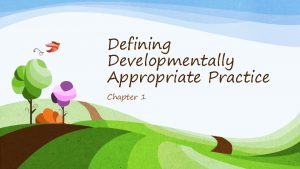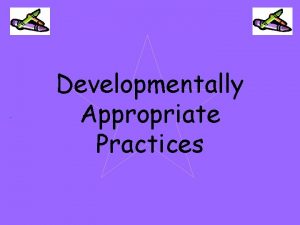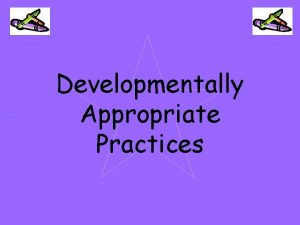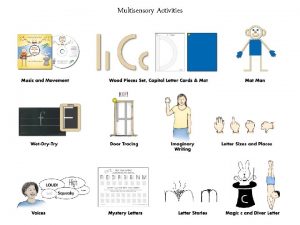Elementary and Middle School Mathematics Teaching Developmentally 10





























- Slides: 29

Elementary and Middle School Mathematics Teaching Developmentally 10 th Edition Chapter 8 Developing Meanings for the Operations Copyright © 2019, 2016, 2013 Pearson Education, Inc. All Rights Reserved

Learner Outcomes 8. 1 Demonstrate how to develop children’s skills in generalizing the problem structures with additive situations involving joining, separating, part-whole, and comparison where the unknown can be in any position. 8. 2 Explain how students can apply the properties of the operations as strategies to either add, or subtract. 8. 3 Demonstrate how to develop children’s skills in generalizing the problem structures with multiplicative situations involving equal groups, comparison, area, and arrays where the unknown can be in any position. 8. 4 Explain how students can apply the properties of the operations as strategies to either multiply, or divide. 8. 5 Describe strategies for teaching students how to solve contextual problems. Copyright © 2019, 2016, 2013 Pearson Education, Inc. All Rights Reserved

Standards-Based Development (1 of 2) K -2 Think about addition and subtraction situations involving adding to, taking from, putting together and taking apart using increasingly sophisticated strategies. 2 nd Solving compare situations as an exploration of multiplication as equal groups, using rectangular arrays to model problems 3 rd Solving two-step problems using all four operations and develop an understanding of the relationship between multiplication and division, as well as applying properties of multiplication Copyright © 2019, 2016, 2013 Pearson Education, Inc. All Rights Reserved

Standards-Based Development (2 of 2) 4 th Expanding the interpretation of multiplicative situations as a comparison with a reference unit, solve multi-step word problems, interpret remainders and learn algorithm for adding and subtracting multi-digit numbers. 5 th Expected to perform fluently with all operations using multi-digit whole number using strategies that consider place value and the application of the properties of the operations as well as the algorithm for multiplication. Copyright © 2019, 2016, 2013 Pearson Education, Inc. All Rights Reserved

Developing Addition and Subtraction Operation Sense • Contextual problems are the primary teaching tool to help children activate problem-solving strategies and gain a rich understanding of the operations. • Contextual problems are more easily solved with multiple representations - Words, pictures and numbers • Contextual problems provide opportunities for children to reason and explaining what they did and why it makes sense within the context Copyright © 2019, 2016, 2013 Pearson Education, Inc. All Rights Reserved

Addition Problem Structures (1 of 2) • Join (add to) - Change being “added to” the initial • Separate (take from) - Change is being removed from initial • Part-part-whole - Either missing the whole or one of the parts must be found Copyright © 2019, 2016, 2013 Pearson Education, Inc. All Rights Reserved

Addition Problem Structures (2 of 2) • Compare - There are three ways to present compare problems, corresponding to which quantity is unknown (smaller = “referent”, larger = “quantity”, or difference). Smaller Copyright © 2019, 2016, 2013 Pearson Education, Inc. All Rights Reserved

Identify What Structure is Represented in These Problems A. Lou had 12 toy cars. Mia gave him 6 more. How may toy cars does Lou have altogether? B. Will has seven crackers and six peanuts. How many snacks does he have? C. Sara had some books. Mary gave her five more. Now she has 12. How many books did Sara begin with? D. Kate had six more pets than Liz has 2 pets. How many pets does Kate have? Copyright © 2019, 2016, 2013 Pearson Education, Inc. All Rights Reserved

Problem Difficulty Join and Separate problems with start unknown • Hard for children to model. They do not know how many counters to put down initially. Part-part-whole problems • No action to model since it is a conceptual bringing together of quantities. • Challenge for children to grasp a quantity represents two things at once. Compare problems • Challenged by language of “how many more? ” Copyright © 2019, 2016, 2013 Pearson Education, Inc. All Rights Reserved

Teaching Addition and Subtraction (1 of 5) Contextual Problems Lessons built on context or stories that are connected to children’s lives. Contextual problems derived from recent experiences in the classroom; field trip, children’s literature, art, science discussion. Yesterday, we measured how long you were using cubes. Dion and Rosa asked how many cubes long they are when they lay down head to foot. Rosa was cubes long and Dion was 59 cubes long. How long are Rosa and Dion when lying head to foot? Copyright © 2019, 2016, 2013 Pearson Education, Inc. All Rights Reserved

Teaching Addition and Subtraction (2 of 5) Model-Based Problems Addition 5 + 3 = 8 • Action situations-Join and Separate • No-action situations – Part-part-whole model with cubes or hops on a number line – Compare problems Copyright © 2019, 2016, 2013 Pearson Education, Inc. All Rights Reserved

Teaching Addition and Subtraction (3 of 5) Bar diagrams – Strip or tape generate “meaning-making space” precursor to use of number lines Number lines – Shift from counting number of objects in a collection to length units Copyright © 2019, 2016, 2013 Pearson Education, Inc. All Rights Reserved

Teaching Addition and Subtraction (4 of 5) Subtraction • “Think-addition” versus “take away” significant for mastering subtraction facts • What goes with the part I see to make the whole? • Important to use same models that connect the two operations Copyright © 2019, 2016, 2013 Pearson Education, Inc. All Rights Reserved

Teaching Addition and Subtraction (5 of 5) Comparison Models • Comparison situations - Two distinct sets and the difference between them. • Discuss the differences between the two (dots, bars, jumps) • How many more do we need to match the fill in the blank? Copyright © 2019, 2016, 2013 Pearson Education, Inc. All Rights Reserved

Properties of Addition and Subtraction Commutative Property Associative Property • Order of addends does not change the answer. • Adding three or more numbers does not matter what numbers are added first. • Essential for problem solving • Mental mathematics • Mastery of basic facts • Mental mathematics Copyright © 2019, 2016, 2013 Pearson Education, Inc. All Rights Reserved

Developing Multiplication and Division Operation Sense making means facilitating students: • connecting the different meanings of multiplication and division to each other • connecting multiplication and division to addition and subtraction • effective application of these operations in real-world settings Copyright © 2019, 2016, 2013 Pearson Education, Inc. All Rights Reserved

Multiplication and Division Problem Structures (1 of 3) Equal-group problems [a × b = c] • The first factor [a] counts how many sets, groups or parts of equal size. • The second factor [b] tells the size of each set, group or part. • The third number [c] is the whole or product. • When number and size is know the problem is multiplication. • When either group size or number of groups is unknown the problem is division. Copyright © 2019, 2016, 2013 Pearson Education, Inc. All Rights Reserved

Multiplication and Division Problem Structures (2 of 3) Comparison Problems • Two different sets or groups • The comparison is based on one group being a particular multiple of the other • Three possibilities for the unknown: – Product – group size – number of groups Copyright © 2019, 2016, 2013 Pearson Education, Inc. All Rights Reserved

Multiplication and Division Problem Structures (3 of 3) Array and Area Problems Array – Equal group situation • first factor number of rows • second factor number of items in equal groups found in each row Area – Two-dimensional units • Product a different type of unit from the two factors Copyright © 2019, 2016, 2013 Pearson Education, Inc. All Rights Reserved

Teaching Multiplication and Division • Use interesting contextual problems instead of more sterile story problems (or naked numbers) • Focus on sense making and student thinking, solving a few problems using tools such as physical materials, drawings and equations. • Introducing symbolism as a way to record children’s thinking • Remainders — What to do with remainders is central to teaching division- three effects on answers – discard remainder – force the answer up to the next highest whole number – rounded to nearest whole number • Should not just think of remainders as “R 3” or “left over. ” Copyright © 2019, 2016, 2013 Pearson Education, Inc. All Rights Reserved

Model-Based Problems Students benefit from activities with varied models to focus on the meaning of the operation and the associated symbolism. Copyright © 2019, 2016, 2013 Pearson Education, Inc. All Rights Reserved

Activity 9. 5 Finding Factors • Materials- square tiles, cubes, grid paper Directions: • Think of a context that involves arrays ( i. e. parade formation, seats in a classroom, patches on a quilt) • Assign a number that has several factors — e. g. , 12, 18, 24, 30, or 36. Have students find the many arrays and record them on grid paper Have students write the corresponding multiplication equations Try Factorize applet on the NCTM Illuminations website Copyright © 2019, 2016, 2013 Pearson Education, Inc. All Rights Reserved

Properties of Multiplication and Division (1 of 2) Commutative property for multiplication: The array provides a clear picture that the two represent equivalent products. Associative property for multiplication: This property allows that when you multiply three numbers in an expression you can multiply either the first pair of numbers or the last pair, and the product remains the same. Copyright © 2019, 2016, 2013 Pearson Education, Inc. All Rights Reserved

Properties of Multiplication and Division (2 of 2) Zero and Identity Properties Distributive Property Contextual examples help children use reason with 0 and 1. • Factors can be split (decomposed) on an array to show to partition factors. • How many grams of fat are in 7 servings of celery if celery has 0 grams of fat? • Where would 0 hops of 5 put you on a number line? • Model an array of 6 × 0. Copyright © 2019, 2016, 2013 Pearson Education, Inc. All Rights Reserved

Strategies Teaching Operations (1 of 2) Think about the answer before solving the problem. Focus on the problem and the meaning of the answer instead of on numbers. The numbers are not important in thinking about the structure of the problem. What is happening in this problem? Focus on the structure of the problem, identify the numbers that are important and unimportant. What will the answer tell us? Thinking leads to a rough estimate of the answer and the unit of the answer. Will it be a small or large number? About how many will it be? Copyright © 2019, 2016, 2013 Pearson Education, Inc. All Rights Reserved

Strategies Teaching Operations (2 of 2) Work a simpler problem. 1. Substitute small whole numbers. 2. Model the problem. 3. Write an equation. 4. Write the corresponding equation. 5. Calculate. 6. Write answer in complete sentence. Copyright © 2019, 2016, 2013 Pearson Education, Inc. All Rights Reserved

Cautions About the “Key Word” Strategy Sends a wrong message about doing mathematics • Children ignore the meaning and structure of the problem. • Mathematics is about reasoning and sense making. Key words are often misleading. • Many times the key word or phrase suggest an operation that is incorrect. Many problems do not contain key words. • Children are left with no strategy for solving the problem. Key words do not work with two-step problems. • Using this approach with simpler problems sets students up for failure on more complex problems. Copyright © 2019, 2016, 2013 Pearson Education, Inc. All Rights Reserved

Common Errors and Misconceptions (1 of 2) Common Error or Misconception What It Looks Like How to Help 1. Student treats the equal sign as an operation symbol or as a signal to compute For 5 + 4 = fill in the blank + 3, says the fill in the blank should be 9 because 5 + 4 = 9. Use a number balance to illustrate the relational meaning of the equal sign. When asked if 6 = 6, says no, because there is no computation to do. Read the equal sign as “is the same as” and “equals. ” When asked if 7 = 3 + 4, says no, because “you can’t write it that way because there is no computation to do. Its backwards. ” Avoid reading 5 + 3 “makes” 8 because the word “makes” sounds like an operation or that you have to carry out an action. Pose true/false number sentences in a variety of equation formats. Copyright © 2019, 2016, 2013 Pearson Education, Inc. All Rights Reserved

Common Errors and Misconceptions (2 of 2) 1. Student overgeneralizes the commutative property of addition and subtraction. 2. Student thinks that adding zero makes a number bigger and subtracting zero makes a number smaller. 3. There is no relationship between addition and subtraction and /or multiplication and division. 4. Addition or multiplication make numbers bigger. 5. Subtraction and division make numbers smaller. The divisor must be less than the dividend. 6. Students choose the wrong operation in word problems. 7. Students the think the remainder is left over and not part of the answer. Copyright © 2019, 2016, 2013 Pearson Education, Inc. All Rights Reserved
 Elementary and middle school mathematics 10th edition
Elementary and middle school mathematics 10th edition Detroit public schools
Detroit public schools Assure lesson plan
Assure lesson plan Seifuku japan
Seifuku japan Aims are
Aims are Demonstration method
Demonstration method Scaled down teaching meaning
Scaled down teaching meaning 10 effective dap teaching strategies
10 effective dap teaching strategies Developmentally appropriate practice definition
Developmentally appropriate practice definition Developmentally appropriate environment
Developmentally appropriate environment Developmentally appropriate curriculum 7th edition
Developmentally appropriate curriculum 7th edition Define developmentally appropriate practice
Define developmentally appropriate practice Principles of developmentally appropriate practice
Principles of developmentally appropriate practice Developmentally appropriate curriculum 7th edition
Developmentally appropriate curriculum 7th edition Developmentally appropriate curriculum 7th edition
Developmentally appropriate curriculum 7th edition Principles and standards for school mathematics
Principles and standards for school mathematics Holland middle school track and field
Holland middle school track and field Ubujan elementary school
Ubujan elementary school Family sis schoolmax
Family sis schoolmax Mckay elementary school
Mckay elementary school Sealey elementary school
Sealey elementary school Leila g davis
Leila g davis Wexford elementary school
Wexford elementary school Kistler elementary school
Kistler elementary school Weatherstone elementary school
Weatherstone elementary school Terry fox elementary school
Terry fox elementary school Sudduth elementary school
Sudduth elementary school Heathrow elementary school rating
Heathrow elementary school rating Richard edwards elementary school
Richard edwards elementary school Lydiksen elementary
Lydiksen elementary
